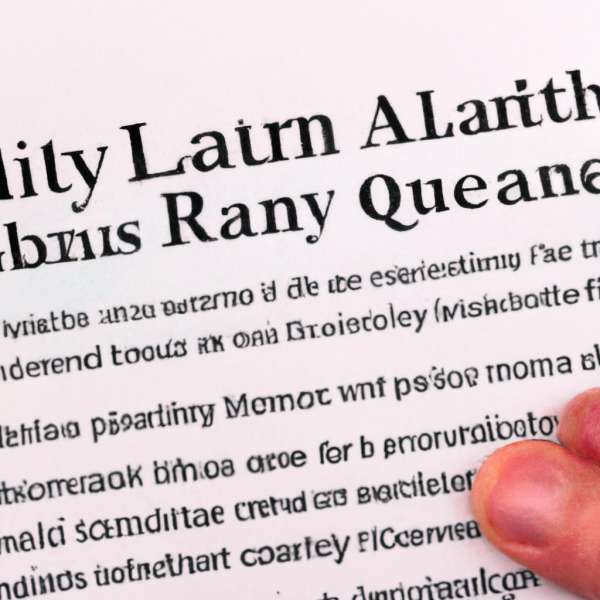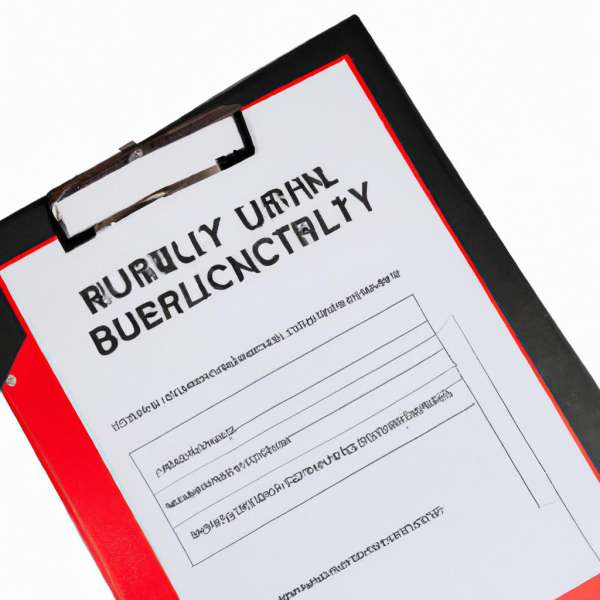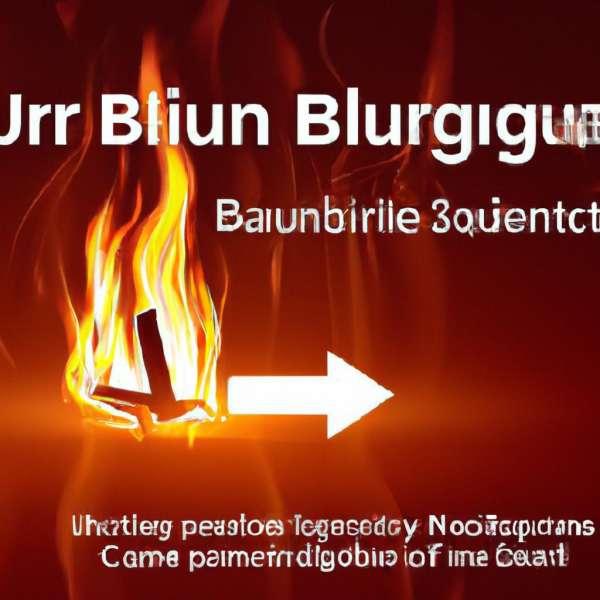Understanding Burn Injury Claims: Navigating the Path to Justice and Healing
In the blink of an eye, life can change dramatically—especially for those who suffer the devastating effects of burn injuries. Whether resulting from a workplace accident, a household mishap, or negligence in public spaces, these injuries can lead not only to physical pain but also to emotional and financial turmoil. The journey to recovery is often complicated, leaving victims and their families navigating a labyrinth of medical procedures, insurance policies, and legal proceedings. This article aims to illuminate the intricate landscape of burn injury claims, providing clarity and insight into the rights of victims, the nuances of the legal process, and the critical steps toward securing the compensation necessary for healing and rebuilding lives. Whether you are a victim seeking justice or simply looking to understand this area of law, join us as we delve into the invaluable knowledge that can empower and support those affected by burn injuries.

The Nature of Burn Injuries and Their Impact on Victims
Burn injuries represent one of the most severe forms of trauma, not just physically, but also emotionally and psychologically. The severity of burns is typically classified into different degrees, each reflecting the extent of damage to skin and underlying tissues:
- First-degree burns: Affect only the outer layer, resulting in redness and mild pain.
- Second-degree burns: Penetrate deeper, causing blistering and significant pain.
- Third-degree burns: Destroy both the outer and inner layers of skin, often leading to numbness and requiring surgical intervention.
- Fourth-degree burns: Extend beyond the skin, affecting muscles and bones, often resulting in long-term disability.
The physical ramifications of burn injuries can be devastating. Survivors may endure extensive medical treatments, including surgeries, skin grafts, and long-term rehabilitation. These procedures not only demand substantial financial resources but also take an emotional toll on victims and their families. Chronic pain, scarring, and changes in physical appearance can lead to significant psychological distress, including issues with self-esteem and social reintegration.
Social factors also play a role in the recovery process. Victims may face challenges when returning to work or participating in social activities, leading to feelings of isolation or depression. Understanding these multifaceted impacts is crucial for addressing the needs of burn victims holistically, as successful recovery often involves both medical and psychological support systems. Additionally, it is essential to consider how these challenges influence potential burn injury claims, as victims seek compensation for their suffering and losses.

Navigating the Legal Landscape of Burn Injury Claims
Filing a burn injury claim can be a complex and daunting process, requiring an understanding of both medical and legal aspects. The landscape for these claims is filled with intricacies that demand careful navigation. Individuals seeking compensation must familiarize themselves with the essential components of a burn injury case, which typically include:
- Establishing Negligence: Demonstrating how another party’s negligence led to the burn injury is crucial.
- Documenting Medical Evidence: Comprehensive medical records, including treatment history and prognosis, play a vital role in substantiating claims.
- Understanding the Types of Burns: Different degrees of burns (first, second, and third) can influence the severity of the claim and potential compensation.
- Statute of Limitations: Awareness of the time limits for filing a claim is essential to preserve the right to seek compensation.
Moreover, the process often involves dealing with **insurance companies** and their tactics. Insurers may attempt to minimize the value of a claim by offering low settlements or suggesting that the victim shares some responsibility for the incident. Therefore, having a strong understanding of one’s rights and possibly consulting with a legal professional can help in navigating these hurdles effectively.
| Burn Type | Common Causes | Potential Compensation Factors |
|---|---|---|
| First Degree | Sunburn, Minor Scalds | Medical Bills, Pain and Suffering |
| Second Degree | Fire, Chemicals | Rehabilitation Costs, Lost Wages |
| Third Degree | Explosions, Severe Burns | Long-term Care, Emotional Distress |
In addition to understanding the various aspects of burn injury claims, being aware of typical compensation outcomes can provide greater clarity. Compensation often depends on factors such as the severity of the injury, impact on the victim’s quality of life, and long-term medical needs. Gathering detailed documentation and professional testimonials can bolster one’s case, ensuring that the legal strategy aligns with the overarching goal of fair compensation for losses incurred due to another party’s actions.

Essential Documentation for Successful Burn Injury Cases
In navigating the complexities of burn injury claims, the importance of comprehensive documentation cannot be overstated. Proper documentation not only strengthens a case but also enhances the chances of securing the deserved compensation. Essential documentation can range from medical records to witness statements, each playing a crucial role in building a compelling narrative surrounding the injury.
Here are some key documents to gather and maintain throughout the claims process:
- Medical Records: Detailed reports from healthcare professionals outlining the extent of the burn, treatment plans, and recovery timelines.
- Incident Reports: Official records from the location of the burn (e.g., workplace, public space) detailing circumstances and any safety violations present.
- Photographic Evidence: Before and after images of the burn, which can visually convey the severity and impact on the victim’s life.
- Witness Statements: Written accounts from individuals who observed the incident can provide additional context and support the victim’s claims.
It’s also important to maintain a record of all related expenses. Creating a simple table to track costs related to treatment, therapy, and other relevant financial losses can be beneficial. Here is a sample format:
| Type of Expense | Amount | Date |
|---|---|---|
| Medical Bills | $3,500 | 01/15/2023 |
| Rehabilitation | $1,200 | 02/10/2023 |
| Lost Wages | $4,000 | Various |
Moreover, documenting emotional and psychological impacts through journals or therapy notes provides an additional layer of evidence, reinforcing claims of suffering. All these elements together create a robust foundation for a burn injury case, helping to ensure that victims achieve fair and just compensation for their pain and suffering.

Strategies for Maximizing Compensation and Support
When navigating the complexities of burn injury claims, it’s essential to adopt strategic approaches that can enhance your compensation and support. By comprehensively understanding the factors that affect your claim, you can optimize your chances of receiving fair compensation for your injuries and losses. Focus on the following strategies:
- Document Everything: Keep a detailed record of your medical treatments, expenses, and any related correspondence. This will provide essential evidence to support your claim.
- Understand Your Rights: Familiarize yourself with local laws regarding personal injury claims and the specific limitations that may apply to burn injuries.
- Seek Legal Assistance: Enlisting a knowledgeable attorney who specializes in personal injury claims can significantly improve your chances for success, as they can navigate the legal intricacies on your behalf.
- Gather Witnesses: If applicable, collect statements from individuals who witnessed the incident or can attest to the severity of your injuries and their impact on your daily life.
Additionally, calculating the full extent of damages can help in presenting a compelling case. Consider categorizing your damages as follows:
| Type of Damage | Example |
|---|---|
| Medical Expenses | Emergency care, surgeries, rehabilitation |
| Pain and Suffering | Emotional trauma, stress, reduced quality of life |
| Lost Wages | Time off work due to recovery |
| Future Damages | Long-term care needs, potential loss of earning capacity |
Each of these aspects contributes to building a comprehensive claim that accurately reflects the impact of the burn injury on your life. By approaching your claim methodically and seeking the necessary support, you can better navigate the path to recovery and compensation.
Future Outlook
navigating the complexities of burn injury claims can be a daunting task, laden with emotional and financial challenges. However, understanding the intricacies of these claims not only empowers victims but also provides them with a pathway toward recovery and justice. By familiarizing yourself with the legal landscape, the medical implications, and the resources available, you equip yourself with the tools necessary to make informed decisions.
Whether you are a survivor, a loved one, or simply seeking knowledge, remember that every burn injury story is unique, shaped by individual circumstances and experiences. The road to healing may be long, but with proper guidance and support, the flame of hope can illuminate even the darkest paths. As you move forward, let the insights gained from this article serve as a foundation for navigating the road ahead—one that leads not only to legal resolution but also to the possibility of renewal and resilience.


